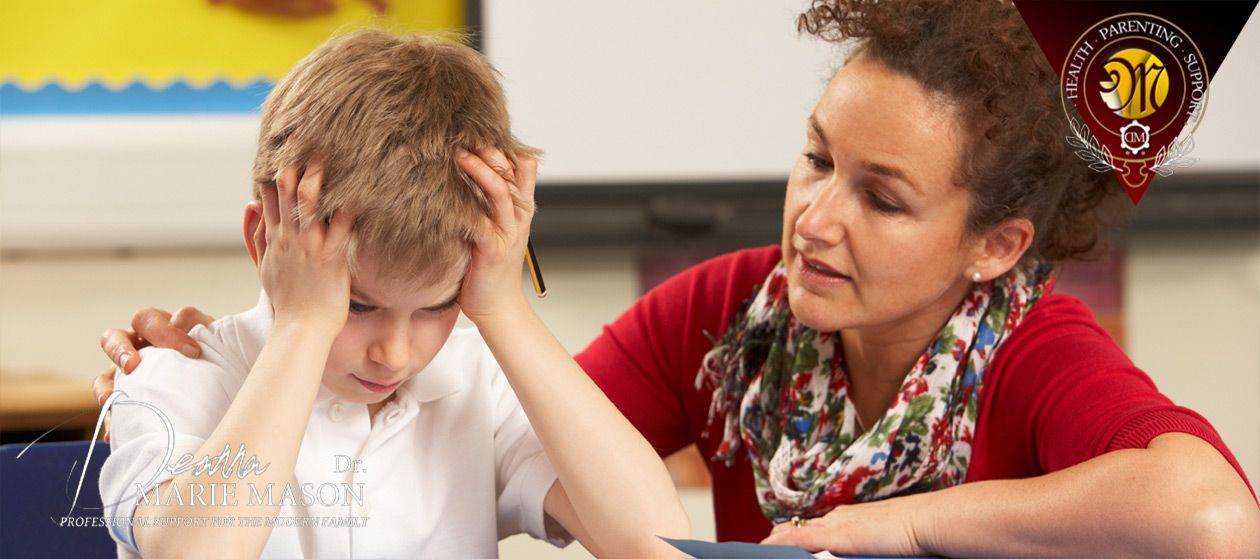To be honest, being a parent can test one’s patience. The stress of daily life and the needs of our children can be overwhelming at times. Additionally, our personality and character may not always mix well with the personality and character of our children. It is common to feel frustrated. It is also human to want to release that frustration. Learning to use a calm parenting style can help parents feel more in control while also being a positive example for children.
Why it is important to remain calmed?
In moments of stress, worry or tension, we may not be the best version of ourselves as parents. Perhaps we lose our temper, yell, criticize, demean, spank, slap or scare our children in our attempt to discipline them or correct a behavior. It happens to every parent. Yet most of us know that these behaviors do not bring us closer to our children even if they correct the child’s behavior in the short term. To learn more about how to discipline without physical punishment, please see my blog post “The importance of avoiding spanking as a child discipline method“.
When we are under stress, a physiological and hormone reaction happens in our bodies called the fight-or-flight response. This response evolved in our bodies to help us react quickly to life-threatening situations. However, in today’s modern world this reaction can be triggered from any type of stressful situation such as a work deadline, bad traffic, worrying out our child’s well being, or having too much to do and too little time to complete all the tasks.
What are the consequences of losing our temper?
When we feel stressed, a cascade of hormones is released and creates changes in our bodies such as a faster heartbeat, faster breathing, increased blood pressure, and muscle tension. In these moments, our bodies are focused on survival and reducing the threat we feel. This may lead us to yelling, hitting, making threats or giving ultimatums to our children in an attempt to quickly subdue a negative behavior or correct potentially dangerous activities. The abruptness of our response to our children is in part influenced by the fight-or-flight response our bodies are experiencing.
Unfortunately, when we begin yelling, hitting, making threats or giving ultimatums to our children, we set off their fight-or-flight response that causes the same cascade of hormones to be released in their bodies and increases their heart rate, breathing rate, blood pressure and muscle tension as their bodies go into survival mode. In these moments, our children are focused on reducing the threat that they feel. This, in turn, is what often causes them to stop the negative behavior immediately.
To learn more about the cascade of hormones and physiological changes due to the fight-or-flight response, please see my blog entry “Tips to stay calm when everything seems to be going out of control“.
How do we manage these situations efectively?
In the short term, using parenting strategies that strike fear into children does produce results. Children will stop the negative behavior in order to reduce the threat they feel. However, this strategy only stops a behavior in that moment and fails to teach children how to behave better. Children need to learn why they need to change to a more appropriate behavior so that they can make better choices in the future when choosing their actions.
Using calm parenting techniques has been shown to increase a sense of trust between parent and child as well as help children master their emotions and behaviors. When we use proactive parenting strategies such as praise, flexibility, engaging children in activities they can succeed in, and provide rewards such as smiles and hugs we are able to draw the best out of our children.
Calm parenting is necessary to use these proactive strategies. When we are calm, it will be easier for us to remain focused on teaching our children why they must stop one behavior and learn to use a better behavior. Being calm will allow us to be present in the moment with our child. If we are in fight-or-flight mode, our focus will be directed to getting our children to stop the behavior we find unsafe or irritating rather than teaching them something new.
Interestingly, when we stay calm and are able to use proactive parenting strategies to motivate our children towards more positive behaviors, our children also stay calm. This occurs because the proactive parenting strategies increase a sense of belonging, trust, and openness between our children and ourselves. Children see our parenting strategies as guiding and helping instead of an attack. This means that we do not set off their fight-or-flight response and they can remain calm and hear what we are saying without fear.
Children who are calm when being disciplined are able to hear, understand, and accept what they are being told because they are not experiencing the cascade of hormonal and physiological changes (e.g. increased heart rate, increased breathing rate, muscle tension, higher blood pressure) while interacting with their parents. This means more of what we are telling our children is heard and absorbed. More importantly, our message is absorbed in a loving manner and our children feel closer to us as a result.
The great news about this whole process is that even if we have been parenting while in fight-or-flight mode up to this point, we can change at any time and our children will immediately respond to our calm parenting techniques. The earlier we start parenting in a calm manner, the greater the benefits to our children. Calm parenting creates calm children as well as increasing a sense of belonging and trust between parents and children.
And you, have you felt that you lost control sometime in stressful situations with your children? Have you ever felt that staying calm brings many benefits to your children? Tell us your experiences.
Sources:
Raine, A., Venables, P.H., Dalais, C., et al. (2001). Early educational and health enrichment at age 3-5 years is associated with increased autonomic and central nervous system arousal and orienting at age 11 years: Evidence from the Mauritius Child Health Project. Psycholophysiology 38, pp. 254-266. doi: 10.1017/S0048577201990067
Tau, G.Z., Peterson, B.S. (2010). Normal development of brain circuits. Neuropsychopharmacology 35, pp. 147-168. doi: 10.1038/npp.2009-115
Webster-Stratton, C. (2011). The Incredible Years Series – Parents, Teachers and Children’s Training Series: Program Content, Methods, Research and Dissemination (1980-2011). Incredible Years, Inc.: Seattle, WA.
About the instructor
Proactive Parenting
Deanna Marie Mason PhD
More than 20 years of clinical experience helping families:
Bachelor's Degree in Registered Nursing, Master’s Degree in Pediatric Nurse Practitioner and PhD in Nursing. University professor, patient education specialist, pediatric researcher, published author and reviewer to first-line international scientific journals, continuous philanthropic activity related to health promotion and education, wife and mother of two children.






